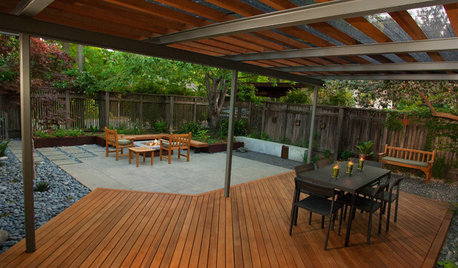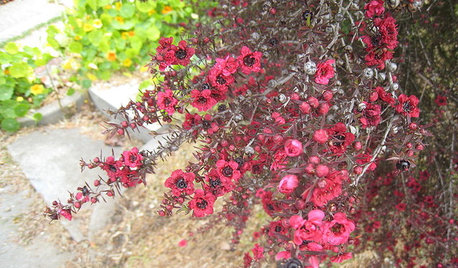pH meters - maintenance
GreenDune
13 years ago
Related Stories

LANDSCAPE DESIGN7 Low-Maintenance Lawn Alternatives
Turf isn't the only ground cover in town. Get a lush no-grass lawn with clover, moss and other easy-care plants
Full Story
PATIOSPatio Details: Simple Materials Make for a Sophisticated Space
Low water bills and minimal maintenance are just part of the beauty of this handcrafted backyard deck and patio
Full Story
GARDENING GUIDESGreat Design Plant: New Zealand Tea Tree
Balance pretty polish and ruggedness in a temperate garden with this low-maintenance and drought-tolerant flowering shrub
Full Story
HOUSEPLANTSMother-in-Law's Tongue: Surprisingly Easy to Please
This low-maintenance, high-impact houseplant fits in with any design and can clear the air, too
Full Story
GRASSES10 Ways to Use Ornamental Grasses in the Landscape
These low-maintenance plants can add beauty, texture and privacy to any size garden
Full Story
GREEN BUILDINGHouzz Tour: Passive House in Vermont Slashes Heating Bills
Its ecofriendly, low-maintenance design leaves a family with more time to relax and enjoy the weekend home
Full Story
DISASTER PREP & RECOVERYHouzz Tour: Modern Farmhouse Emerges From Hurricane Sandy Devastation
A homeowner loses her cottage but gains a new energy-efficient, low-maintenance home
Full Story
GARDENING GUIDES6 Wonderfully Easy Roses for Any Gardener
Look like an expert even if you're just starting out, with these low-maintenance gems of the rose world
Full Story
ROOM OF THE DAYRoom of the Day: Beachside on Martha's Vineyard
A young family's low-maintenance great room offers rustic charm and enticing views of the ocean
Full Story
LANDSCAPE DESIGNLandscape Tour: A Place to Savor Life in California’s Wine Country
A couple’s Napa Valley weekend getaway is designed for outdoor living with a low-maintenance, drought-tolerant landscape
Full StorySponsored
Most Skilled Home Improvement Specialists in Franklin County
More Discussions







grizzman
Soyousee
Related Professionals
Kyle Landscape Architects & Landscape Designers · Redondo Beach Landscape Architects & Landscape Designers · South Orange Landscape Architects & Landscape Designers · Gainesville Landscape Contractors · Brockton Landscape Contractors · Byram Landscape Contractors · Hickory Hills Landscape Contractors · La Mirada Landscape Contractors · Mission Viejo Landscape Contractors · New Baltimore Landscape Contractors · Peoria Landscape Contractors · Plymouth Landscape Contractors · Seminole Landscape Contractors · Vancouver Landscape Contractors · Merrifield Landscape Contractorsbbrush
Soyousee
freshlygrownfarms
hardclay7a
homehydro
Soyousee
Soyousee
homehydro